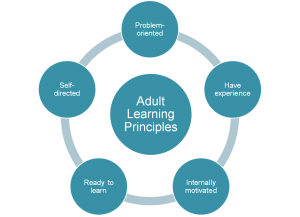4 Hints and Tips Towards Better Teaching Techniques
Having to deliver or even attend training courses that are by their very nature defined as ‘dry and boring’ can be fuelled by the fact that the lessons are full of statistics and definitions or where lecturers have got it horribly wrong during lesson planning. Some of the tell tale signs are:
- Too many PowerPoint slides (The moment a student picks up on this it will usually drive fear and dread in to their hearts and will hinder engagement).
- Over use or poorly measured colour schemes on slides
- Over use of transition.
- Bad PowerPoint technique and timing (Jumping in and out of slides and presentations)
- Skipping slides
So, are we going to just accept that some lessons are very dry and as an instructor just plough through the lesson and get onto more interesting lessons, or, is it possible to look at maybe a different approach to the delivery? When I say different approach, I am really talking about engagement with students. Standing at the front of a course and regurgitating stuff from a folder, book or tablet can be counter-productive. Some lessons will be dry and boring, but by approaching this kind of lesson differently, it is possible to embrace these lessons and get as much out of them as possible from more interactive ones.
Here’s how:
1) Use Andragogy

I have found that as an industry we tend to go for a pedagogy approach to training where an instructor/lecturer stands in front of the lesson and reading the lesson. I have experimented with using ANDRAGOGY for the last 24 months were I have worked hard to engage students and foster a relationship whereby they want to learn…..simple as that. If we want to do something then we are going to do a better job and I think that this applies to learning, if someone feels valued and part of the experience they will learn better and the retention of knowledge has more of a chance.
However, is ANDRAGOGY just a lazy instructor? In my opinion NO. In our industry now we need cognitive input from ALL within the industry, therefore, we are employing intelligent personnel, gone are the days whereby we may have worked with individuals that were academically challenged. a lazy instructor or a 21st century approach to training.
2) Set The Scene and Revisit Often
During introductions at the start of conferences and lectures, the intro tends to be usually short and I have experienced it were it has been presented as a non-thing!! To me, this is possible the most important part and by getting this right, to me it feels like people waiting outside a door not sure whether to go in or not. By getting the intro right and allowing students to hypothetically walk through the door into the lesson, they will feel part of the experience, at ease, want to interact and many other positive effects. I have achieved this by avoiding standing behind lecterns at all cost. By coming out where possible to the centre of the classroom or removing as many physical barriers between you and the students kind of puts you in there world, so whilst the instructor, you are delivering the lecture on and even footing.
On completion of a lesson, naturally I provide a link to the following lesson, I have found value at this point to refer back to the intro and the reason for the course. This supports the value of the whole course and as a class you can link the entire course content together and by cross referencing content you can establish value in all parts of the course. I have also found that naturally you have to teach stuff in chunks, by constantly referring and cross referencing lessons you are not just ploughing through content and not using the information that you have spoke of.
3) Allow Your Students To Teach (Mastery)

I have heard, and am a strong believer that the best way to learn is to teach. As you can see from this picture, I encourage students where possible to present to their piers their findings, opinions, understanding etc. This supports understanding of what you are trying to impart and will help students retention. Going back to a previous statement, this is why it is so important to spend the right amount of time on the intro and break down the lazy pedagogy barriers and maybe look at a twenty first century way of delivering instruction through ANDRAGOGY.
4) Display Course Aims During Revision Periods

During revision periods I have found that displaying the course aim in the background whilst talking about the lesson content in the fore ground can help in linking the whole lesson together. On our HELM course, as part of the intro lesson we have a short video that completes the whole setting of the scene. When we complete a lesson we write it on a display board and we use this to refer back to. Whilst I do this I have the video running in the background and this helps me maintain the value of what we are talking through.

Delivered lectures and instruction to a wide range of students from company CEO’s to deck hands since 1996.
Courses Joe currently delivers at ECDIS Ltd:
- HELM
- Training Course for Instructor
- Simulation Instructor Course
